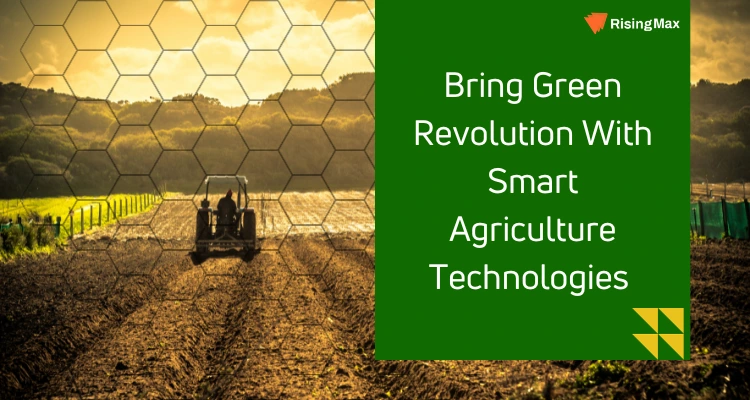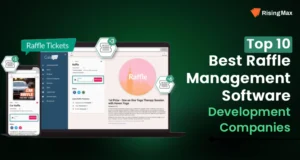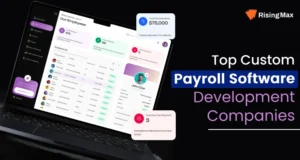In recent years, the Internet of Things (IoT) has revolutionized various industries, and agriculture is no exception. This transformative technology has ushered in a new era of precision farming, enhancing productivity, sustainability, and overall efficiency in agricultural practices. IoT in agriculture involves the integration of sensors, devices, and data analytics to monitor and manage crucial aspects of farming, such as soil quality, weather conditions, crop health, and livestock well-being.

By providing real-time insights, farmers can make informed decisions, optimize resource allocation, and reduce waste. This article explores the multifaceted impact of IoT on modern agriculture, highlighting its potential to address global food security challenges while minimizing environmental impact.
Also Read: IoT Solutions For Smart Cities
What Is Smart Farming?
Smart farming, powered by the Internet of Things (IoT), represents a technological leap forward in agriculture. It leverages a network of connected devices and sensors to revolutionize farming practices. These devices collect real-time data on various factors, including soil moisture, temperature, crop health, and livestock behavior. This data is then analyzed to make informed decisions, optimize resource use, and maximize yields.
Smart farming enhances sustainability by reducing water and fertilizer wastage and enabling precision in pest and disease management. Farmers can increase productivity, reduce labor costs, and respond proactively to changing environmental conditions through remote monitoring and automation, ultimately contributing to more efficient and sustainable agriculture.
Explore Our Smart AgTech Solutions Today!
We encourage potential clients to discover the innovative agricultural technologies offered by the company, emphasizing a partnership in shaping the future of farming.
Features Of Smart Agriculture Technologies
IoT Sensors
Utilizes a network of sensors to gather data on soil moisture, temperature, humidity, and more.
Remote Monitoring
Allows farmers to monitor their fields and livestock remotely via smartphones or computers.
Data Analytics
Employs advanced analytics to process data and provide actionable insights for decision-making.
Precision Agriculture
Enables precise resource allocation, optimizing water, fertilizer, and pesticide use.
Automated Equipment
Integrates automation for tasks like planting, harvesting, and irrigation.
Crop Health Monitoring
Detects early signs of disease or pest infestations, allowing for timely intervention.
Livestock Tracking
Tracks the health and location of livestock for better management and health care.
Weather Forecast Integration
Incorporates weather data for real-time adjustments to farming operations.
Energy Efficiency
Utilizes energy-saving techniques like solar power and efficient equipment for sustainability.
Also Read: IoT In Revolutionizing The Construction Industry
Why Smart Farming Using IoT Is Necessary
Smart farming with IoT plays a vital role in ensuring food safety through these key points:
Early Disease Detection
IoT sensors continuously monitor crop health, detecting diseases and pest infestations in their early stages. This proactive approach enables farmers to take immediate action, reducing the need for chemical interventions and ensuring the safety of the harvested produce.
Traceability
IoT-enabled systems provide detailed data on the entire agricultural process, from planting to harvesting and transportation. This traceability allows for the swift identification and removal of contaminated products in the event of a food safety issue, preventing widespread outbreaks.
Environmental Control
IoT helps maintain optimal environmental conditions during food production and storage. Temperature, humidity, and ventilation monitoring systems ensure that perishable goods are stored under safe conditions, reducing the risk of spoilage or contamination.
Quality Control
IoT in smart farming enables real-time monitoring of various quality parameters such as water purity, soil composition, and air quality. This ensures that the agricultural inputs and environments meet stringent safety standards, ultimately producing safer and higher-quality food products.
Data-Driven Compliance
IoT-generated data aids farmers in complying with food safety regulations and standards. By providing documented records of all processes and conditions it simplifies the auditing process, allowing for rapid identification of any non-compliance issues and quick corrective actions.
Consumer Transparency
IoT technology allows consumers to access information about the origin and safety of their food through QR codes or labels. This transparency fosters trust between consumers and producers, as individuals can make informed choices about the products they purchase, knowing they come from a safe and reliable source.
Reach out to RisingMax Inc. agricultural technology experts, initiating a conversation about how their solutions can benefit their farming operations. Ready to Cultivate Success?
9 Use Cases Of Smart Farming Technology
Precision Irrigation
Smart farming systems employ soil moisture sensors and weather data to precisely control irrigation. By delivering the right amount of water directly to the root zones when needed, this technology conserves water, prevents soil erosion, and optimizes crop growth. Farmers can remotely adjust irrigation schedules, reducing water wastage and increasing crop yields, even in regions with water scarcity.
Crop Health Monitoring
IoT sensors and drones equipped with multispectral cameras monitor crop health in real time. By detecting early signs of disease, nutrient deficiencies, or pest infestations, farmers can take immediate action, minimizing crop damage and the need for chemical treatments. This results in healthier crops, reduced chemical usage, and higher-quality produce.
Livestock Tracking and Management
Smart farming extends to livestock with wearable IoT devices. These devices monitor animal behavior, health metrics, and location. Farmers gain insights into the well-being of their livestock, detect illnesses early, and ensure timely veterinary care. This technology also aids in optimizing feeding and breeding schedules, improving overall livestock productivity.
Automated Harvesting and Sorting
Autonomous vehicles and robotic systems equipped with sensors and cameras can harvest crops efficiently. These robots can sort and package produce based on size, quality, and ripeness, reducing labor costs and post-harvest losses. Automated harvesting and sorting ensure consistent product quality and streamline the supply chain.
Climate-Controlled Greenhouses
Smart greenhouses leverage IoT sensors and actuators to maintain ideal environmental conditions for plant growth. These systems regulate temperature, humidity, and CO2 levels, optimizing the greenhouse environment. Farmers can grow crops year-round and produce high-value, out-of-season produce. This technology promotes sustainable agriculture and ensures consistent crop quality.
Supply Chain Transparency
Smart farming systems provide end-to-end supply chain visibility. From the farm to the consumer, blockchain technology tracks every step, including planting, harvesting, packaging, and transportation. Consumers can access detailed information about the origin and safety of their food products, fostering trust and transparency in the food industry while reducing the risk of foodborne illnesses. We provide IoT solutions for supply chain management.
Increased Efficiency
Smart farming technologies optimize resource utilization, reducing waste and boosting overall farm efficiency to give accurate results in farming.
Higher Yields
Precision agriculture techniques enable farmers to maximize crop yields through data-driven decision-making.
Resource Conservation
Smart farming minimizes water, fertilizer, and pesticide usage, promoting sustainable farming practices. This leads to an accurate amount of supplies that seeds and plants need to grow in perfect weather conditions.
Also Read: IoT Traffic Management System
Steps to Integrate IoT In Smart Farming System
Integrating IoT into a smart farming system involves several crucial steps to ensure seamless connectivity and maximize its benefits:
Assess Farming Needs and Objectives
Begin by identifying the specific goals and challenges of your farm operation. Determine which aspects of farming, such as irrigation, crop monitoring, or livestock management, can benefit from IoT technology. Understanding your objectives will guide the selection of appropriate IoT solutions.
Select Suitable IoT Sensors and Devices
We build IoT sensors and devices tailored to your farming needs. Consider factors like sensor accuracy, range, and compatibility with your existing infrastructure. For instance, soil moisture sensors, weather stations, and livestock trackers are common choices for various applications.
Network Infrastructure Setup
Establish a robust network infrastructure that can support IoT connectivity. Ensure reliable internet access across your farm, potentially using a combination of Wi-Fi, cellular, or even satellite connections, depending on your location.
Data Collection and Integration
Deploy IoT sensors to collect data on environmental conditions, crop health, or livestock behavior. Implement data integration platforms that aggregate and analyze this data in real time. Cloud-based solutions are often used to store and process the vast amounts of data generated.
Data Visualization and Analytics
Utilize user-friendly dashboards and analytics tools to visualize and interpret the collected data. This empowers farmers to make informed decisions based on insights into crop performance, resource utilization, or animal health.
Automation and Control Systems
Implement automation systems that can act on the data gathered by IoT sensors. For instance, automated irrigation systems can adjust water flow based on soil moisture readings. These systems enhance efficiency and reduce manual labor.
Security and Maintenance
Prioritize security measures to protect your IoT network from cyber threats. Regularly update IoT firmware and software to ensure the continued functionality and security of your IoT devices. Additionally, provide training for farm personnel to use and maintain the IoT infrastructure effectively.
By following these steps, we effectively integrate IoT into their smart farming systems, enhancing productivity, sustainability, and overall farm management.
Why Choose RisingMax Inc. For IoT In Agriculture
We are a well-known software development business that uses its development expertise to aid your company in its future planning. Integrating state-of-the-art technologies can help you stay one step ahead of the competition and streamline your business operations.
Why you ought to select us is as follows:
Tech Experts
Our software development workforce is knowledgeable about cutting-edge technology and has first-hand project experience. We design innovative software solutions that are specifically suited to your demands using our technological know-how.
Experienced Developers
The development team at RisingMax follows an agile development and IoT integration strategy, as mentioned above. We are able to deliver on and fulfill the expectations of our clients thanks to our precisely planned management software development strategy.
Transparency
We employ transparent pricing depending on your software development since we recognize that no two firms have the same requirements. In order to provide the greatest commercial product, our team consults with the client to identify a suitable development budget.
Business Solution with Security
The primary goal of our development team is to produce risk-free and secure business solutions. We thus use rigorous testing processes to provide our clients with extremely secure business solutions.
Conclusion
Integrating IoT technology into smart farming systems offers immense potential to revolutionize agriculture. By carefully assessing farming needs, selecting the right IoT sensors, and establishing robust network infrastructure, we can harness the power of real-time data collection and analysis. This data-driven approach empowers them to make informed decisions, optimize resource use, and enhance crop health and livestock management. Automation systems further streamline operations, reducing labor and maximizing efficiency. However, it’s crucial to prioritize security and ongoing maintenance to ensure the long-term success of IoT integration. Ultimately, the synergy between agriculture and IoT promises increased yields, reduced environmental impact, and a sustainable future for farming.












